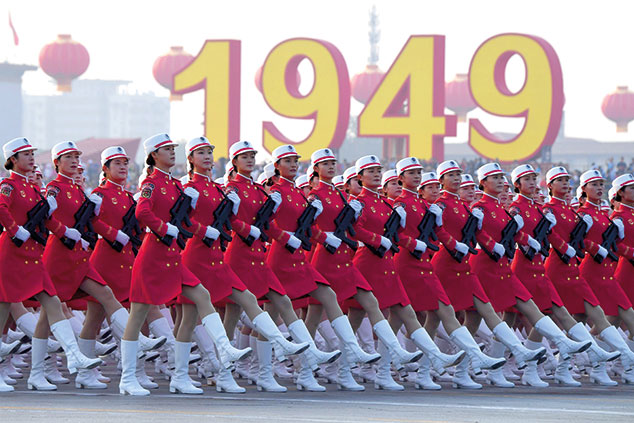
For all the fuss about the trade war, China’s CSI 300 index is up by 28% so far this year, with investors reassured by official promises of “selective stimulus”. Yet with the economy registering its slowest growth in 27 years in the second quarter and total debt topping 300% of GDP, can the leadership keep the good times rolling?
From Cultural Revolution to capitalism
China’s Communist Party has now held on to power for one year more than the Soviet Union’s Communist Party did, notes Anna Fifield for The Washington Post. The last 70 years have been tumultuous. The first three decades of the People’s Republic were marked by “massive famine, political chaos and the repression of the Cultural Revolution”. Yet in the 1980s Deng Xiaoping initiated an “astonishing transformation”, combining free-market reforms with tough political repression that kept the Communist Party in power.
China is now the world’s second-largest economy and looks poised to overtake the US at some point in the next decade. Its GDP per capita has risen from a derisory $200 at the Republic’s founding in 1949 to more than $10,000. Communist China “now accounts for one-third of global sales of luxury goods”. The post-reform era delivered the “fastest sustained expansion by a major economy in history”, say Kuijs and Duncan. Growth averaged 9.5% per year and GDP doubled every eight years, helping to lift “850 million people out of poverty”. In 1981, 90% of China’s people lived in extreme poverty. By 2013 the figure had slumped to less than 2%.
Getting old before it gets rich?
Much of China’s growth was driven by the nation’s ability to “provide cheaper labour than other industrialised nations at a massive scale”, says Ben Winck for Business Insider. Yet as wages have risen, the country is losing that competitive edge to neighbours such as Vietnam. That could eventually see the Middle Kingdom caught in a classic “middle-income trap” of the type that has plagued Latin American states; it could get stuck at this level of wealth and fail to become a developed economy. Yet unlike many other emerging markets, China also has to contend with an ageing population. The working age population has been shrinking since 2015, and the population as a whole is likely to begin falling as early as 2032, according to Richard Koo of Nomura. A protracted trade war threatens to undermine the manufacturing industries that once drove spectacular growth.
But the next decade risks being marred by slowing income growth and widening inequality, says Nathaniel Taplin for The Wall Street Journal. Beijing may turn to “even more nationalism to paper over the cracks”. For investors in Asia and beyond “this is a worrying and volatile mix.”
Will Hong Kong remain a major financial centre?
Protests in Hong Kong have overshadowed the festivities in Beijing, says Sebastian McCarthy in City A.M. Under the “one country, two systems” framework instituted after its return to China in 1997, Hong Kong has retained significant autonomy over its own affairs. Yet Beijing is increasingly undermining its freedoms.
Over the last four months a quarter of the population has marched to demand the scrapping of a bill that would have allowed extradition to mainland courts, says The Economist. It was a “stunning vote of no confidence in China’s communist-controlled legal system”. The bill has now been withdrawn, but the wider pro-democracy movement it triggered remains vibrant.
The unrest has cast doubt on whether the territory can retain its status as one the world’s pre-eminent financial hubs, says Jacky Wong in The Wall Street Journal. Hong Kong owes its success to its position as a gateway into the vast Chinese market. Mainland companies make up about 70% of the local stockmarket. If businesses shift to other hubs such as Shanghai or Singapore then the city faces an “existential threat”.
At the time of Hong Kong’s handover from the UK to China, it represented 16% of China’s total GDP, compared with 3% today, says Alexander Chipman Koty in China Briefing. Yet the territory remains vital as a source of capital flows for the mainland. Roughly 64% of foreign direct investment into China goes through Hong Kong. The Heritage Foundation has ranked the city’s economy as the world’s freest for 25 years in a row; mainland China is number 100. Talk of the “death of Hong Kong” is over the top. Yet the days when investors could regard the territory as a “bastion of stability” are over. It is turning into a “politically unpredictable” powder keg.